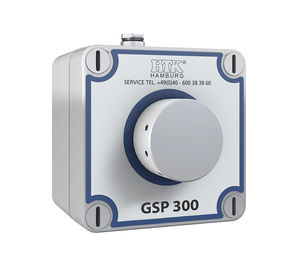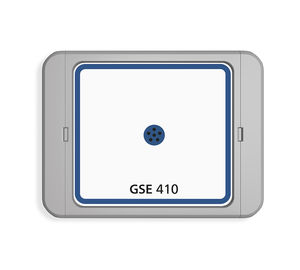
Gas detector GSI 400refrigerant gastoxic gasmethane

Add to favorites
Compare this product
Characteristics
- Detected entity
- gas
- Gas type
- refrigerant gas, toxic gas, methane, pentane, propane, hexan, butane, carbon dioxide, ethanol
- Technology
- infrared, NDIR
- Application
- outdoor, for indoor use
- Other characteristics
- ATEX
- Output
- analog
Description
Gas Detector NDIR
Gas Detector Unit with an NDIR Infrared Sensor is suitable for indoor and outdoor use. The GSI 400 is suitable for the détection of réfrigérants, methane, carbon dioxide and many other gases.
It is also available in SIL and ATEX certified versions upon request
Features
•Monitors the air for toxic gas concentrations
•Low cross-sensitivity to other gases
•Can be user) in dusty and dirty environments
•High accuracy
•Long service life
•IP54 (B) and IP65 (T) variants available
Sensor Technology
The GSI 400 Gas Detector can be supplied with a variety of different infrared sensors and can be used for a variety of applications.
Sensor Connection
We recommend a stable 24 V DC power supply to operate the gas sensors GSI 400. The allowed voltage range is 18 to 36 V DC. The sensor may be connected using a shielded cable with two twisted pairs, i.e. JY(St)Y 2x2 x0.8 mm, using the wires:
Red:+24 VDC, Terminait
White: Sensor output 4 • 20 mA, Terminal 2
Black:0 V,Terminal 3
Yellow: PE/Shield,Terminal 4
Adjustment Instructions
NDIR sensors reguire a 1 hour warm up period prior to adjustment Please refer to the Operating Instructions regarding this.The test gas must be at ambient température i.e. the same température as the sensor.
The adjustment of the gas sensor must only be carried out by suitably qualified persons. In order to adjust and calibrate any SCENTY® Gas Warning System and Gas Sensors, the corresponding Software modules are reguired.
Catalogs
Related Searches
- Gas detector
- Infrared detector
- Industrial detector
- Monitoring detector
- Compact detector
- CO detector
- O2 detector
- Indoor detector
- Electrochemical detector
- Analog detector
- CH4 detector
- Toxic gas detector
- Outdoor detector
- CO2 detector
- ATEX detector
- Flammable gas detector
- H2 detector
- NO detector
- NH3 detector
- Modbus detector
*Prices are pre-tax. They exclude delivery charges and customs duties and do not include additional charges for installation or activation options. Prices are indicative only and may vary by country, with changes to the cost of raw materials and exchange rates.








